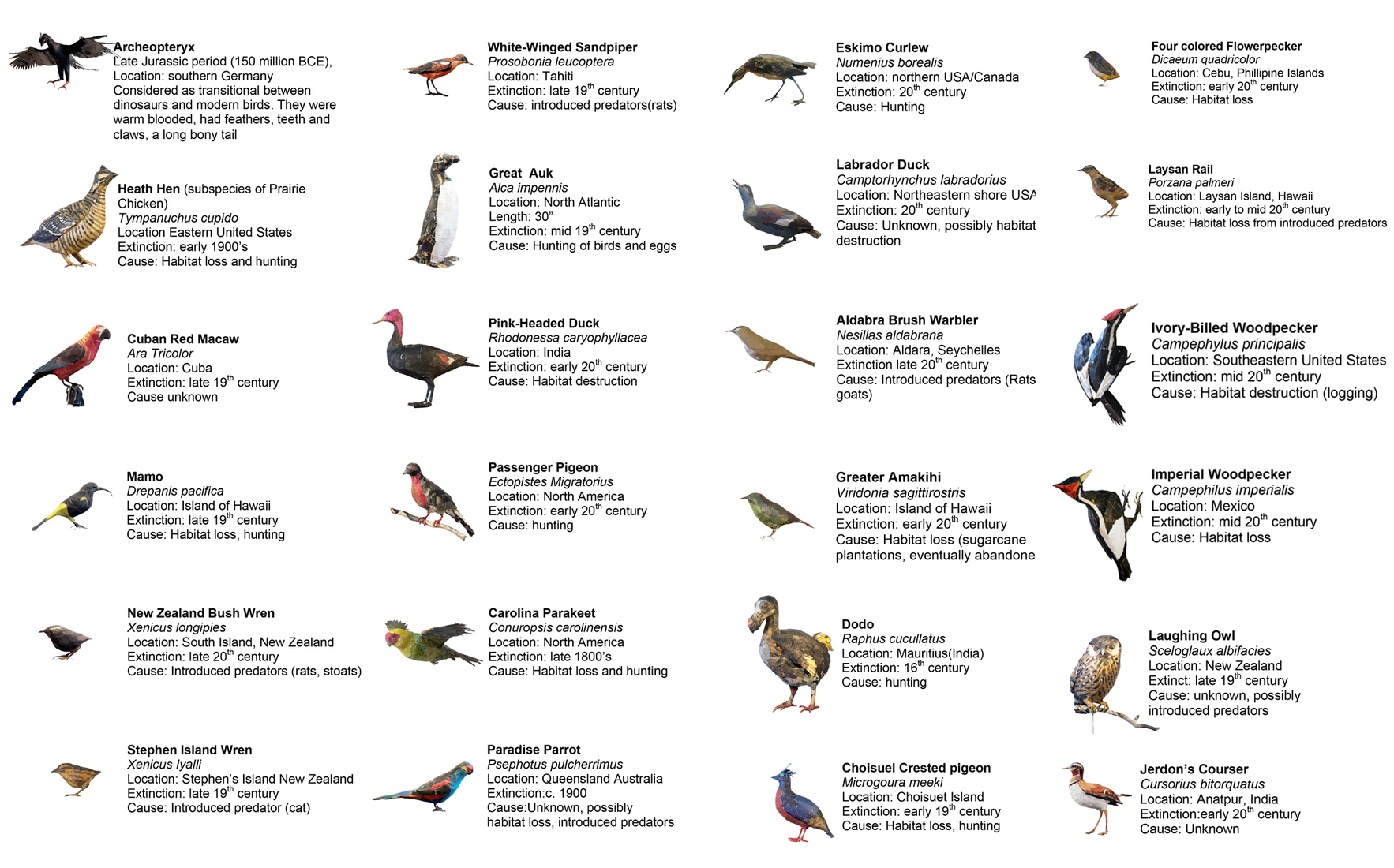Ninety percent of all species that have become extinct have been birds

Ninety percent of all species that have become extinct have been birds.
Birds, magnificent creatures that have roamed the Earth for millions of years, have faced numerous challenges throughout their existence. From natural disasters to human intervention, various factors have contributed to the decline and ultimate extinction of several bird species. It is a fact, supported by scientific evidence, that an alarming 90 percent of all species that have become extinct belong to the avian class. This astonishing statistic highlights the vulnerability and fragility of our feathered friends.

The extinction of bird species is a significant concern as they play a crucial role in maintaining the delicate balance of our planet’s ecosystems. Birds contribute to pollination, seed dispersal, and insect control, making them indispensable for the survival of other species and even for the overall health of our ecosystems. In addition, many bird species are indicative of the overall health of an environment; their decline or disappearance can serve as an early warning sign of impending ecological imbalance.
Throughout history, the world has witnessed the unfortunate loss of several bird species. The Dodo, an iconic example of extinction, became extinct in the late 17th century due to hunting and habitat destruction. This flightless bird, known for its unique appearance and inability to adapt to human presence, has become a symbol of the devastating consequences of human interference in natural habitats.
While the Dodo might be the most renowned extinct bird, countless other species have met a similar fate. The Carolina Parakeet, once prominent in North America, has completely vanished. Their demise was a result of habitat loss and excessive hunting. The Ivory-billed Woodpecker, with its distinctively large size and striking appearance, is another bird that can only be seen in historical accounts and museum displays. Hunting, loss of habitat, and the introduction of invasive species led to its extinction.
Several factors contribute to the high extinction rate among bird species. Habitat destruction, predominantly caused by human activities such as deforestation and urbanization, is a significant threat. As natural habitats shrink or disappear, birds lose their nesting and foraging grounds, ultimately leading to their decline. Pollution and climate change pose additional challenges as they disrupt breeding patterns, food availability, and migration routes.
Addressing the pressing issue of bird extinction requires a collective effort from governments, organizations, and individuals. Conservation initiatives, such as the establishment of protected areas and breeding programs for endangered species, are vital in ensuring the survival of birds facing extinction. Efforts to reduce pollution, mitigate climate change, and promote sustainable practices can also contribute to creating a safer environment for birds to thrive.
In conclusion, the alarming fact that 90 percent of all species that have become extinct are birds highlights the urgent need for conservation efforts and increased awareness about the importance of these remarkable creatures. By protecting bird species, we not only preserve their inherent beauty and biodiversity but also safeguard the delicate balance of our planet’s ecosystems. Let us work together to ensure a sustainable future where birds can continue to enchant us with their songs, grace our skies, and fulfill their irreplaceable ecological roles.
Source: USA Today
Related Posts
Quick Links
Legal Stuff


